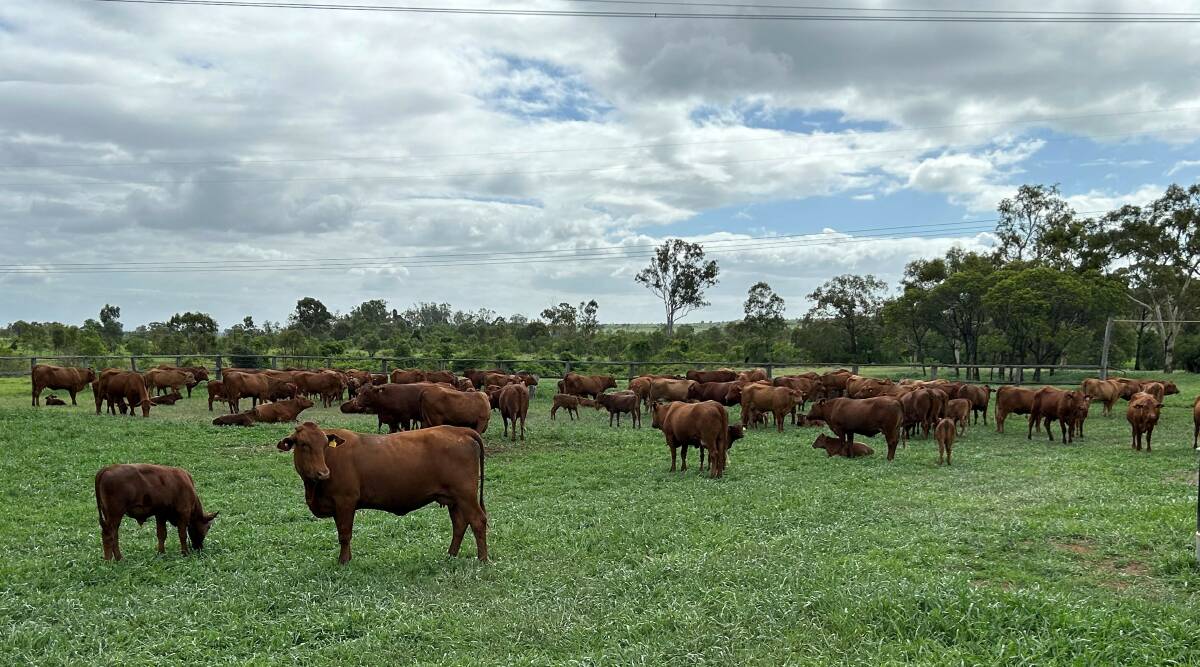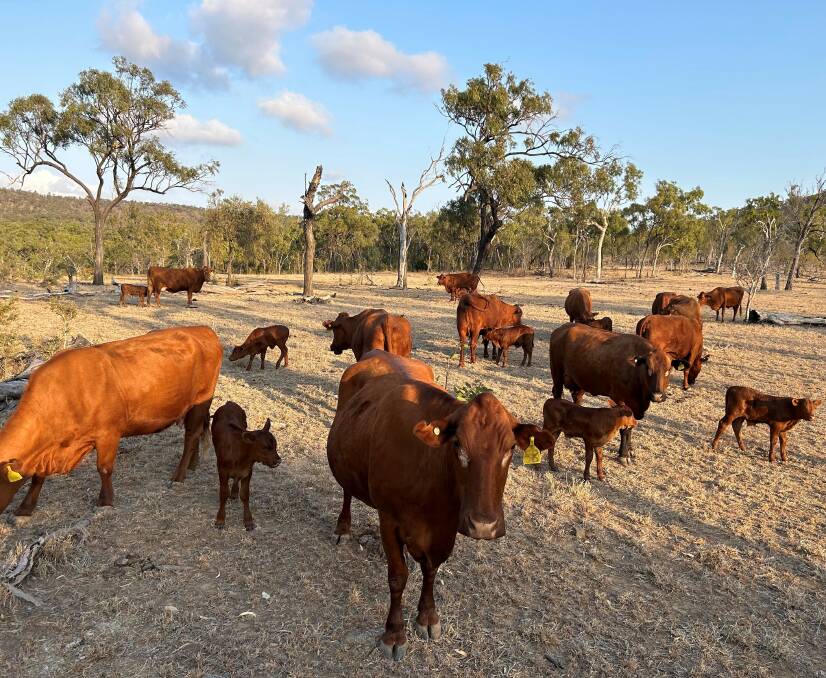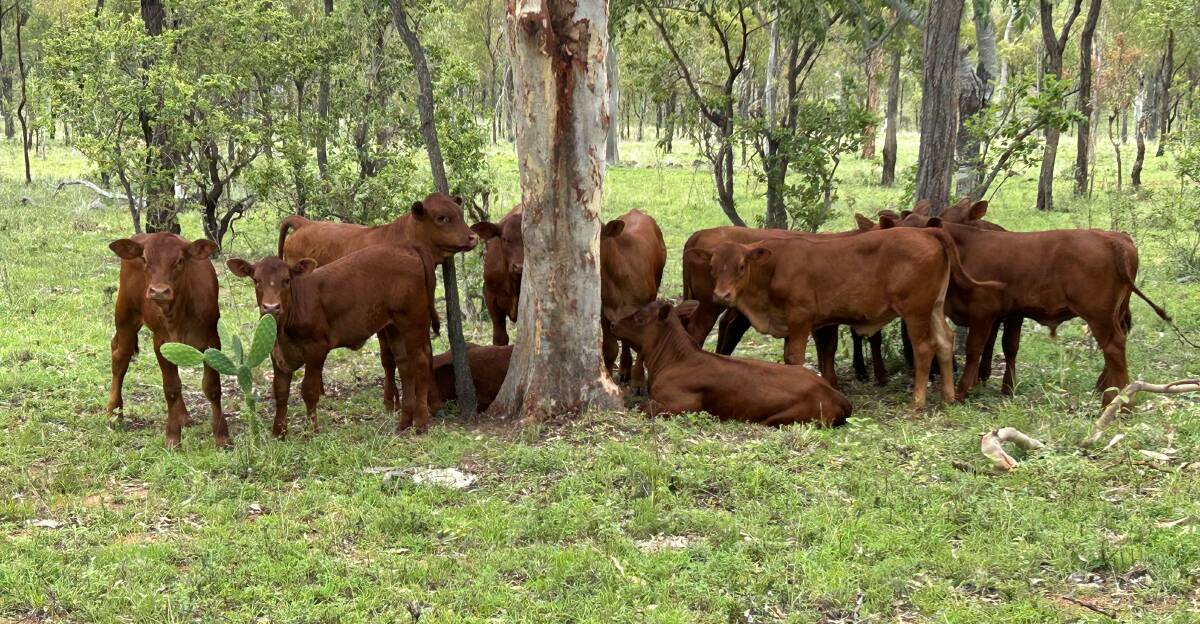Wahroonga Belmont Red herd vision is resolute

THIS IS BRANDED CONTENT FOR WAHROONGA BELMONT REDS
The breeding goal has remained consistent for Robert and Jane Sherry's Wahroonga Belmont Red Stud, since they purchased their first cattle from the breed in 2008.
The Clarke Creek-based couple continue to strive to produce a docile, fertile, moderate-framed, high yielding carcase with high meat quality.
The Wahroonga Stud, which is located 200km northwest of Rockhampton on the western side of the Connors-Broadsound range, sees the Sherry's Belmont Red females run in semi open range Ironbark Bloodwood country with mostly native grass and legumes.
Having been commercial cattlemen for most of their lives and putting up with mediocre results thinking they were normal; the Sherry's eyes were opened when they attended an MLA Breeding Edge workshop in 2014 at Emerald.
"This gave us the knowledge to come home and implement a comprehensive management system for our breeding unit, that with a little refining here and there over the last decade, has seen our breeding herd achieve much higher results," Mr Sherry said.
These refinements included the introduction of a vaccination program and yearly morphology testing of sires, along with the Sherry's shortening their joining period from December until weaning in May/June down to 90 days, which aligned mating to be more in tune with their climate, and their green grass dates.
"We moved joining back to early January, and last summer we reduced the joining window further with yearling heifers being exposed to a yearling bull for 63 days and the single sire adult mobs of 50 to 65 cows joined for 70 days."
Mr Sherry said their future aim is to gradually make this period tighter each year to shorten the calving period.
"Last year, in one group of cows from October 22 until November 22, we recorded more than 80 per cent calving. This gave us an opportunity to do a fixed time AI program on this mob on January 8, using some of the better genetics we had sold at auction but retained semen from.

The Sherry's adopted a no second chance policy from their core breeding unit and yearling mated heifers that have fallen pregnant.
"A breeder that rears a calf each year and stays in the herd until sold due to age is worth her weight in gold."
Mr Sherry said over the last decade this policy has bred resilience into the herd and therefore the business.
"Knowing that when you put the bull in with the breeders in early January one year you will wean a certain number of calves in Autumn the following year is most satisfying.
"This has been evident as we have seen our reproductive rate remain high even through the dry run of years experienced since 2017."
The Wahroonga heifers are mated as yearlings at 13 to 14-months--old and the Sherry's aim to have the majority at 280kg or more at joining in early January.
"We generally remove the culls and then mate the rest of the group letting the bull decide the fertile ones."
He said the sires for these heifers are chosen from Wahroonga yearling bulls with lower birth weight EBVs, and more acutely if they're above average for their 600-day growth trait.
"High fertility traits are essential for all the sires we use, to keep driving the age of puberty and days to calving down. Carcase EBV's are also essential in the selection equation."

The Sherry's were a contributing herd into QAFFI's Northern Genomics program for the initial phase and are again contributing animals and data to it.
"While the Belmont Red doesn't have the required population to have single step genomics yet, we wanted some genomic valuation on our breeding herd. It's a useful tool to aid in selection decisions."
Mr Sherry said they're also aiming to start measuring birthweights and submitting this data for analysis.
"A small workforce has made this a difficult trait to collect to date, as in November/December, time can be consumed with water and supplementation."
Before mating in 2023, the Sherry's ran their breeders and available sires through Matesel, A tool offered by Breedplan to match animals to a producers goals be it balance or high gain.
"On this occasion we chose high gain."
He said the fertility and puberty gains are evident in the Wahroonga herd.
"We've had success in carcase comps in Mackay and Rockhampton. Like most things in the beef producing world it takes time to see the results of decisions made a few years prior."
THIS IS BRANDED CONTENT FOR WAHROONGA BELMONT REDS


